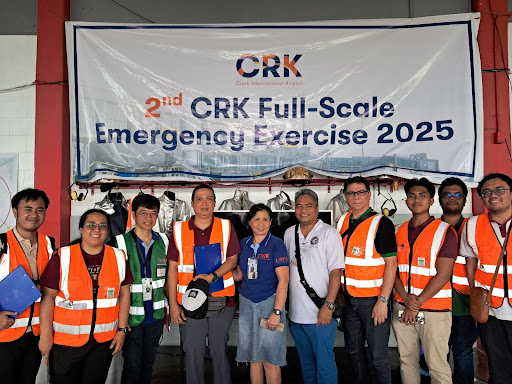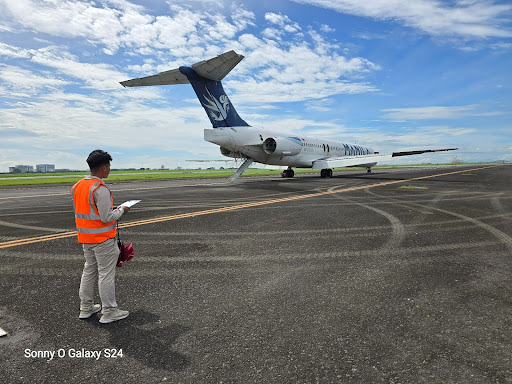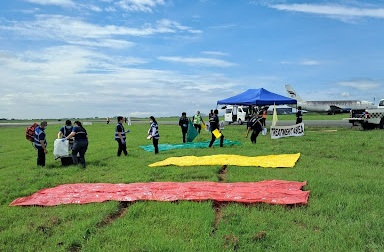Written by David Josh Concepcion

On September 30, 2025, representatives from the UP Resilience Institute – Institution Building Division (UPRI-IB), led by Director Carlos Primero D. Gundran, observed and evaluated the 2nd CRK Full-Scale Emergency Exercise, held at Clark International Airport in Pampanga. The activity was organized by the Clark International Airport Corporation and its partners to assess the airport’s capacity for coordinated emergency response, particularly during aviation-related incidents. The UPRI-IB team’s main objective was to observe and monitor the entire drill, providing relevant expertise to promote national resilience and emergency preparedness further.
The Clark Emergency Drill 2025 aligns with ongoing national efforts to strengthen disaster resilience and public safety within critical transportation hubs. As Clark International Airport continues to expand its operations, exercises such as these ensure preparedness for real-world emergencies and reinforce the importance of inter-agency collaboration. The activity concluded successfully, achieving its objectives of testing operational response capacity and enhancing coordination among stakeholders.
The exercise began with a comprehensive briefing for all participants and observers, outlining the site map, sequence of events, and safety protocols. The simulated scenario involved a power bank that began emitting smoke inside an aircraft, prompting the evacuation of all passengers and crew. The Clark International Airport Fire Department immediately mobilized two Rosenbauer fire trucks to conduct suppression and containment operations, while an ambulance was deployed to simulate medical retrieval and treatment of affected individuals. Midway through the exercise, an evacuation post was established to serve as a coordination point for response and medical assistance.
Throughout the activity, participating agencies demonstrated effective communication, rapid deployment, and procedural efficiency. The simulation was realistic and well-coordinated, showcasing the readiness of the airport’s emergency response teams and the seamless integration of firefighting, rescue, and medical units. Observers from UPRI-IB noted the systematic implementation of evacuation protocols, as well as the cooperation between Clark International Airport personnel and responding agencies.
Overall, the 2nd CRK Full-Scale Emergency Exercise served as a valuable opportunity for the UPRI-IB Team to witness the application of best practices in emergency management. The observation reaffirmed the significance of continuous training and collaboration in fostering a culture of preparedness and resilience.



